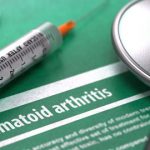- Sensitivity;
- Specificity;
- Positive predictive value (PPV);
- Negative predictive value (NPV); and
- Overall accuracy of DECT and ultrasound both alone and in combination at various bony sites, as expressed by the area under the receiver operating characteristic curve (AUC).1
Compared with synovial fluid aspiration, DECT of the feet and ankles demonstrated diagnostic sensitivity of 87%, specificity of 100%, PPV of 100%, NPV of 67%, and AUC of 0.93. Ultrasound of the feet and ankles had a sensitivity of 84%, a specificity of 60%, PPV of 89%, NPV of 50% and AUC of 0.72. Knee DECT had a sensitivity of 91%, a specificity of 87%, PPV of 97%, NPV of 70% and AUC of 0.89. Knee ultrasound had a sensitivity of 58%, a specificity of 80%, PPV of 92%, NPV of 33% and AUC of 0.66.
The use of both DECT and ultrasound at either the feet and ankles or knees increased sensitivity, but lowered accuracy. Using images from both feet and ankles and knees increased sensitivity and NPV, but did not affect accuracy.
This study demonstrated that DECT alone can diagnose gout of either the feet and ankles or knees with a high level of accuracy.
Implications
Although gout is considered bread-and-butter rheumatology, it’s often anything but straightforward. Scenarios exist in which the clinical picture is highly suggestive of a gout flare, but the synovial fluid cannot be successfully obtained, serum and/or synovial fluid chemistries are discordant or equivocal, and/or polarized microscopy does not reveal the presence of monosodium urate crystals. When faced with these clinical conundrums and because we risk misdiagnosis and offering futile and possibly detrimental therapies, should we not strive to use all the tools available to us?
DECT is a non-invasive imaging tool with a remarkable level of accuracy in identifying monosodium urate crystals. Thus, it can provide important diagnostic information when the traditional approach fails. Moreover, it can help detect monosodium urate deposition within atypical sites and anatomic structures that cannot be easily aspirated, such as along entheses.
DECT has the potential to distinguish both acute and chronic forms of gout from some of its common mimickers, such as osteoarthritis (OA) and calcium pyrophosphate dihydrate (CPPD) arthropathy. It can aid the investigation of refractory cases in which other etiologies, such as malignancy, infection and/or subclinical fracture, may exist.
Although further research is needed to assess if DECT can be reliably used on a broader scale to improve medical decision making and patient outcomes, we believe all rheumatology providers should consider the benefits of integrating DECT into their diagnostic algorithm for gout.


